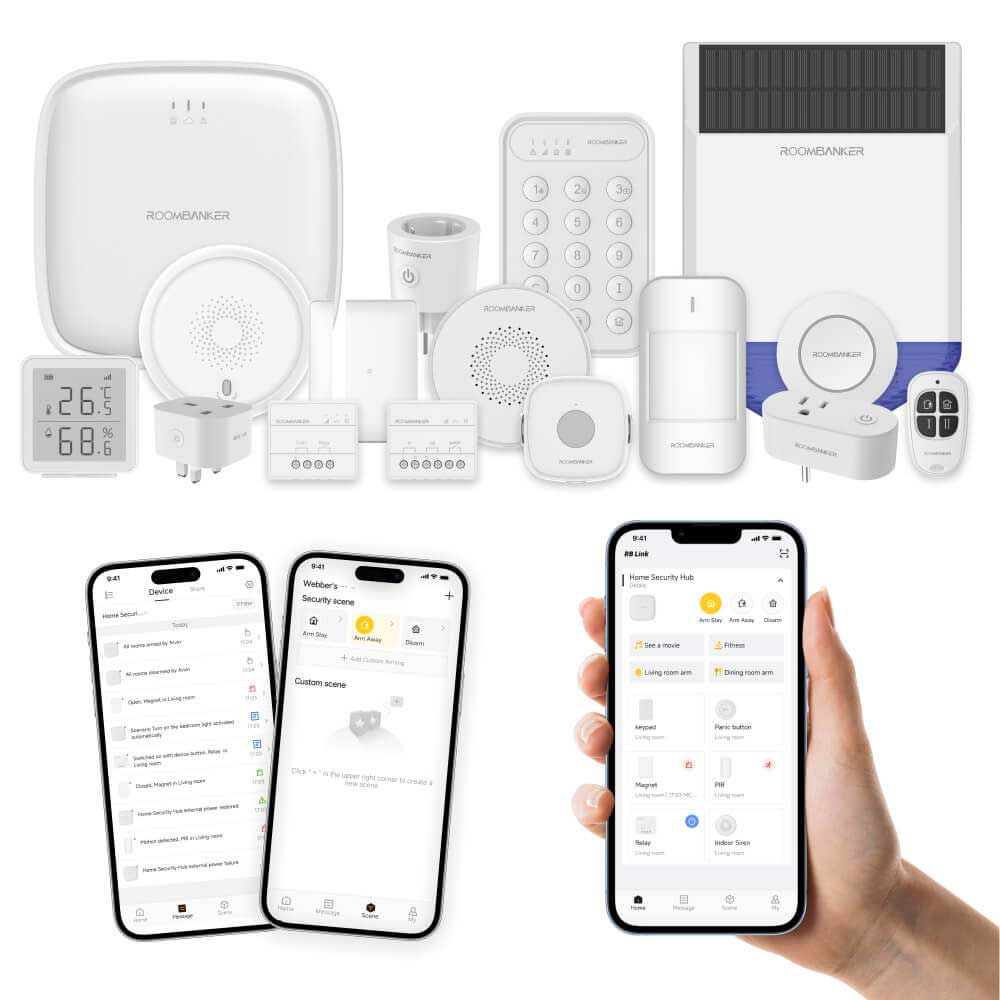The smart home IoT environment encompasses various sub-systems, such as comfort (HVAC automation), safety, and security. All are equally important, but the security alarm system requires special attention to ensure it is safe from attacks as it is the first line of defense against burglars and intruders.
These bad actors are becoming smarter by the day, and are finding it easier to hack, jam, or bypass security systems implemented using the standard wireless protocols.
Therefore, security companies must adapt to make their alarm systems safer, and one of the ways to do so is to use proprietary wireless protocols. This adaptation is critical because wireless devices are becoming more popular in the security alarm industry, and here”s why proprietary protocols are better for this application.

What Is a Proprietary Protocol?
A proprietary protocol is a wireless standard developed exclusively for use by a company to create and develop products that communicate more securely. These products are only compatible with others from the same manufacturer, so they cannot vertically integrate with devices from other manufacturers.
Popular Proprietary Protocols in the Market
Several IoT wireless security alarm solution providers and device manufacturers have identified this security risk and are actively developing proprietary protocols to make customer solutions safer from intruders. Some of them include Silicon Labs and Roombanker.
As an IoT burglar alarm solutions developer, the most important things to consider when picking a proprietary protocol developing partner are experience and expertise.
Roombanker demonstrates these abilities using its ready-made proprietary wireless protocol, which is known as RBF.
RBF is a two-way radio protocol that has long-range capabilities (3.5 km) with low power consumption and most importantly, high-security data transmission.

Why Are Proprietary Protocols Better for Home Security Systems?
The most important reason for developing proprietary wireless protocols is to enhance communication security as devices exchange data.
Standard wireless protocols have publicly known data rates, signal modulation, and message formats, so intruders can use these details to initiate a system hack easily. However, these parameters are obfuscated in proprietary solutions, meaning bad actors don’t have the required details to start with to crack the security alarm system.
Additionally, these protocols feature custom technologies that suit the home security system application. For instance, RBF ensures solid and stable data transmission using TDMA (Time Division Multiple Access) and LBT (Listen Before Talk).

TDMA ensures the peripheral’s (sensors) wake-up time intervals and working time follow strict rules. These sensors can only transmit during designated time slots to report to the home security hub. All peripherals in the system have a synchronized reporting time to minimize internal system interference.
LBT further solidifies this data transmission by preventing data loss and channel congestion. It comes into play when multiple alarm events are triggered simultaneously. Each peripheral activates its LBT mechanism to check the transmission channel before transmitting. If busy, the device can hop to a different frequency or wait for the current channel to become idle before transmitting the data.
Why Are Sub-GHz Protocols Popular As Proprietary Ones in Home Security Devices?
Most proprietary wireless communication protocols operate in the sub-GHz range to build up on the benefits of these transmission frequencies, which include:
Long Range
Sub-GHz frequencies experience lower attenuation than their GHz counterparts when passing through walls and obstacles, meaning the signal doesn’t weaken as much. Therefore, the hub in the security alarm system can communicate with peripherals placed behind multiple wall layers and maintain a strong signal.
Another factor that makes sub-GHz frequencies cover a longer distance is they have a higher diffraction angle. Radio waves travel in a straight line but can bend when they encounter solid obstacle edges, such as corners around walls. By having a higher diffraction angle, sub-GHz frequencies bend more, reduce the blocking effect, and reach further out into several rooms in homes.
On straight transmission paths, sub-GHz frequencies also travel for longer distances because their path losses are lower.
Since home security systems require maximum reliability, this long-range coverage ensures all the peripherals connect to the hub via strong signals to have low-latency data transmission.

Minimal Interference
Smart home environments have multiple wireless devices that mostly communicate using the GHz band, specifically 2.4 GHz. This includes WiFi, ZigBee, and BLE devices. Even microwaves emit 2.4 GHz electromagnetic radiation. Therefore, this airway is crowded and is more likely to experience interference as end nodes communicate with the IoT gateway.
But the sub-GHz band is rarely used, except for long-range applications, such as LoRaWAN. So this band experiences minimal traffic, meaning reduced chances of signal interference and more reliable communication from peripheral to hub and back.
Low Power Consumption
The radios that transmit sub-GHz signals consume less power than their GHz counterparts, which makes both sub-GHz IoT gateways and end nodes more energy efficient. On top of that, the minimal interference experienced in the sub-GHz range means fewer transmission retries, and fewer retries lower battery consumption.
RBF takes it a notch higher by using automatic signal adjustment to reduce power consumption further. Devices communicating via RBF can adjust their RF transmission power automatically depending on the signal strength. Therefore, if the signal is strong, they will lower the transmission power to extend the battery life and reduce maintenance costs.
Low Cost
Batteries are the highest-cost components in most IoT devices. Since sub-GHz frequencies consume little battery power, they can run on smaller, cheaper batteries, making the entire home security solution a low-cost project. In fact, most sub-GHz end nodes run on coin, AA, or AAA batteries, which are relatively affordable.
Requires Minimal Maintenance
Maintenance of home security IoT devices means taking care of updates and battery replacements when they run out. Battery replacements require more work because you have to access each end node for replacement.
But with low power operations, these batteries last longer, reducing the maintenance work. For instance, Roombanker’s door magnetic sensors run on standard AA batteries, which last for 5.5 years. Our outdoor siren is even better because it has an integrated solar panel, so you don’t have to worry about battery replacements.
Perhaps the end node that requires more maintenance work is our panic button. It runs on a tiny CR2032 coin battery that lasts for 3 years.

read this article to know more about Sub GHz protocols
Be Roombanker Wireless Home Alarm System Distributors!
The most important hallmarks of wireless security alarm systems include security and low power consumption. We have concentrated on these aspects when developing our proprietary RBF wireless communication protocol to ensure it meets the home security application perfectly.
- On the security aspect, the protocol prevents signal jamming using FHSS (Frequency-Hopping Spread Spectrum). When the transmitter encounters continuous interference from an intruder, it switches to a different frequency to attempt transmission.
- RBF also employs AES-CCM encryption to block intruders out of the system and prevent interference, signal replication, and interception.
- On power consumption, all our devices have a standby power consumption of below 2 uA and have undergone CE/RED low-power certification tests.
We manufacture complete wireless home-security solution devices, such as smart hubs, magnetic door sensors, PIR sensors, panic buttons, alarm keypads, keyfobs, and solar-powered outdoor alarm sirens. These will enable you to build vertically integrated, low-cost home security solutions that operate seamlessly.

We understand that as a distributor, you need various security solutions to present to your customers, and that’s why we provide these devices to help you build multiple secure wireless intrusion systems at low cost. Our goal is to make wireless home security solutions more accessible, and we need you to bridge the gap between us and the consumers (homeowners).
We offer our distributors various benefits, including:
Want to be our distributor and take advantage of these benefits, fill out the form on this page and we’ll be in touch to discuss the partnership.
